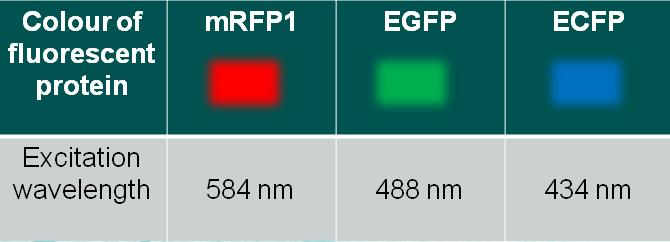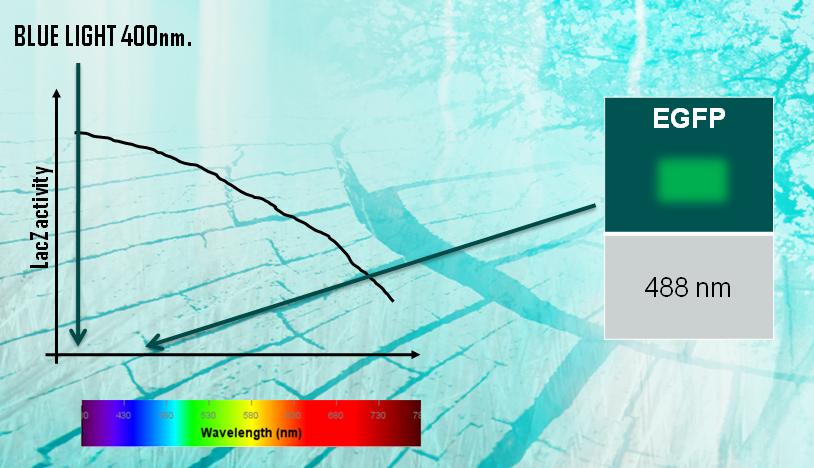Team:Sheffield/Further Work
From 2009.igem.org
(→How can we use the results we obtained from the experiments and the model to create a wavelength biosensor?) |
(→How can we use the results we obtained from the experiments and the model to create a wavelength biosensor?) |
||
| Line 42: | Line 42: | ||
1. When we shine a blue light of 400nm onto our system, the LacZ activity in the system is high, but the wavelength of the light is not high enough to excite the fluorescent protein. | 1. When we shine a blue light of 400nm onto our system, the LacZ activity in the system is high, but the wavelength of the light is not high enough to excite the fluorescent protein. | ||
| + | |||
| + | |||
| + | [[Image:Sheff_400nm.jpg|400px|Left|boarder]] | ||
| + | |||
2. The system will have an initial system that is switched on, but an EGFP that is switched off. Therefore the overall system is switched off | 2. The system will have an initial system that is switched on, but an EGFP that is switched off. Therefore the overall system is switched off | ||
| + | |||
| + | |||
Revision as of 17:26, 18 October 2009
| Home | Team | Project | Further Work | Modeling | Notebook |
|---|
|
How can we use the results we obtained from the experiments and the model to create a wavelength biosensor?This is how we propose that the system would work: From experiments we have characterised this trend of our initial system: We can achieve this through fusing different fluorescent proteins onto the system. Through the characterization of the system, we have a model which shows us the LacZ activity level decrease as the wavelength increases:
Through this method, we can fuse several fluorescent protein with different excitation and emission wavelengths and therefore get a system that can respond to different wavelengths.
|
 "
"




